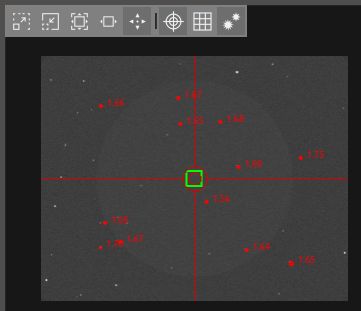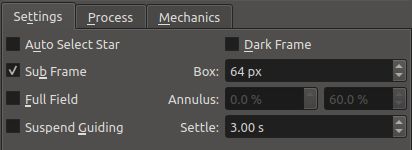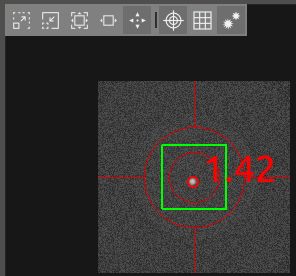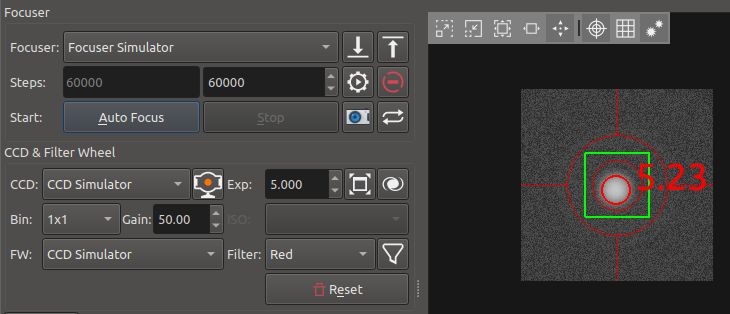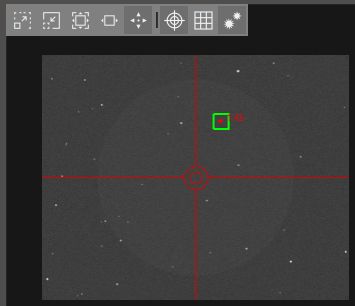INDI Library v2.0.7 is Released (01 Apr 2024)
Bi-monthly release with minor bug fixes and improvements
Collimation Circles
Replied by Bart on topic Collimation Circles
Fit a circle around and inside the out of focus star image. Kstars can then display the value of the difference in center point of the two circles and draw a vector to show the direction.
Cheers! Bart
Please Log in or Create an account to join the conversation.
Replied by Eric on topic Re:Collimation Circles
The first objective of this preliminary work is to introduce point-spread function rendering of stars generated by GSC. The second objective of the activity is to adjust the rendering to produce aberrations, such as the three ones presented in this thread: defocus, elongation due to distance to the optical center and elongation due to optical elements or sensor flatness. The third objective is to provide test and validation support for flatness and collimation analysis in the Focus Module of Ekos.
I must say I have no idea when I can get this all done, given the number of things in my to-do list
Incidentally, the excellent Dr Baudat was on TAIC very recently to talk about his progress on his amazing collimation tool.
-Eric
Please Log in or Create an account to join the conversation.
- Andrew Burwell
-
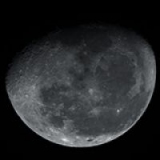
- Offline
- Platinum Member
-

- Posts: 527
- Thank you received: 139
Replied by Andrew Burwell on topic Re:Collimation Circles
I watched this talk after seeing your post. Here's the video for anyone interested in it. It's quite technical, but basically they model every type of arbitration feed it into a computer model for that scope, then can compute it in real time to an output window, as you adjust your collimation it shows the effects in realtime. They plan to take it one step further at some point to tell you which collimation screws to adjust. This would be incredible. But honestly looks quite complex and better suited for a standalone application.
For the simple fix collimation circles would be nice, but they they won't solve all collimation problems. I wish more developers would develop their software cross platform, and take INDI into account. It's grown so much in the last 3 years.
Please Log in or Create an account to join the conversation.
Replied by Doug S on topic Re:Collimation Circles
Please Log in or Create an account to join the conversation.
- David Tate
-
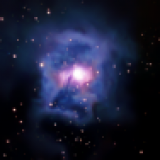 Topic Author
Topic Author
- Offline
- Elite Member
-

- Posts: 309
- Thank you received: 40
Replied by David Tate on topic Collimation Circles
The software is on this page: sweiller.free.fr/collimation.html
But the link to the exe is here: Mire de Collimation
This is what I'd like with my Raspbain version, so I don't have to run this on a Windows PC. I as able to find my old Windows tablet to do this last night.
I just can't get my my current Python version to display a transparent canvas. I'm now looking into doing this in C++.
Please Log in or Create an account to join the conversation.
- Wouter van Reeven
-
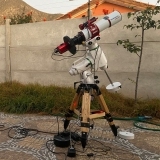
- Offline
- Supernova Explorer
-

- Posts: 1957
- Thank you received: 420
Replied by Wouter van Reeven on topic Collimation Circles
Please Log in or Create an account to join the conversation.
- Wouter van Reeven
-

- Offline
- Supernova Explorer
-

- Posts: 1957
- Thank you received: 420
Replied by Wouter van Reeven on topic Collimation Circles
stackoverflow.com/questions/6104991/transparent-colors-tkinter
using Python 3.7. I disabled overridedirect and resizable so the window can be resized and has a title bar. Resizing the window doesn't work well since dragging the mouse also results in moving the window and it shouldn't but You probably are able to fix that. And play with the alpha value until you're happy with the amount of transparency.
HTH, Wouter
Please Log in or Create an account to join the conversation.
- David Tate
-
 Topic Author
Topic Author
- Offline
- Elite Member
-

- Posts: 309
- Thank you received: 40
Replied by David Tate on topic Collimation Circles
Please Log in or Create an account to join the conversation.
- Wouter van Reeven
-

- Offline
- Supernova Explorer
-

- Posts: 1957
- Thank you received: 420
Replied by Wouter van Reeven on topic Collimation Circles
Please Log in or Create an account to join the conversation.
- David Tate
-
 Topic Author
Topic Author
- Offline
- Elite Member
-

- Posts: 309
- Thank you received: 40
Replied by David Tate on topic Collimation Circles
BTW, what is KStars and Ekos written in?
Please Log in or Create an account to join the conversation.
Replied by Marc on topic Collimation Circles
It's written in C++ using Qt framework. Qt provides the Windows/Mac/Linux portability.
- Marc
Please Log in or Create an account to join the conversation.
Replied by Eric on topic Collimation Circles
I had a look at this feature request. I'd like to offer a procedure with what exists right now in Ekos, and you tell me if/how it may be improved. Then, I would propose how we may automate/improve feedback in the code.
1. Open Ekos, connect equipment, point your telescope to your preferred star or a star open cluster. Verify your CCD can capture the star(s).
2. Navigate to the Focus Module, verify the relevant CCD is selected for operation.
3. Using the "Capture image button", grab a full-field capture of the current star field. Find the optimal focus using your preferred procedure: looping manually, auto-focus... Then reset the procedure results using the Reset button in the CCD & Filter Wheel tab.
4. From there, configure the Settings tab on the lower to not select a star automatically, to not use full field and its annulus circles. Like the following picture, for instance:
You may want to keep guiding with an off-axis guider, and suspend it (eventually) with an on-axis guider.
5. Configure the Process tab on the lower left to use Gradient as detection method, whose detection may be more robust against out-of-focus stars. Like the following picture, for instance:
6. Configure the FITS View on the right to display stars and cross hairs, as well as the default stretch function. Like the following picture, for instance:
7. Using the "Capture image button", grab a full-field capture of the current star field. You should see red circles around some stars, with their HFR written on the side. Like the following picture for instance:
Note that your optical train should be at optimal focus following step 3.
8. Configure the Settings tab to use a sub-frame. The width of the sub-frame depends on your sensor and on the size of the star. Like the following picture for instance:
9. Review HFRs and choose one star to start your collimation by clicking on it in the FITS view. Depending on which progress you made on the procedure, select a star at the center or on the sides of the frame. A new sub-frame will be taken automatically with the crosshairs overlaid:
10. Write down the current focuser position in case you want to return to it later. Click the "Start framing" button, and iteratively de-focus the star on one side of the optimal focus plane by entering a different enough focuser step value in the "Desired absolute focus position" edit box and clicking the "Go to an absolute position".
This manipulation depends on your focuser hardware, but the result should be a properly visible de-focused star. Increase exposure if necessary. This is what the CCD Simulator shows, but you should get an elongated star instead:
11. Execute your collimation procedure while the Focus module is looping on the star. If the star is moving out of the subframe, you should use guiding in parallel.
12. Move the focuser on the other side of the optimal focus plane just like you did at step 10, at the opposite distance. Check and eventually adjust your collimation.
13. When satisfied, stop looping and delete the focus results. Grab a new full-frame star field and repeat from step 9 with another star, preferably on the other side of the frame.
Note the procedure does not define what a "collimation procedure" is, as this depends on your setup.
There is also no support for determining the center of the illuminated frame right now. Such information could be determined from star ellipses on the full-field frame.
-Eric
Please Log in or Create an account to join the conversation.




